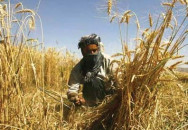Policies for growth
How did the world come to be this way? Can we change things for the better? These questions and the urge to ‘do something about it’ arise naturally to sensitive and compassionate people.

Policies for growth
Statistics cannot convey what journalist Kevin Carter showed with a photo of a vulture waiting for a starving child to die. Haunted by vivid memories of starving children, Kevin committed suicide three months later.
At the same time, the rich buy crocodile skin briefcases worth $20,000. How did the world come to be this way? Can we change things for the better? These questions and the urge to ‘do something about it’ arise naturally to sensitive and compassionate people.
Theories of how modernisation, industrialisation and development could be achieved were created in the post-colonial era. The dismal record of such theories has been recorded in several books like the Failure of Economic Development.
In Pakistan, we have firsthand experience of this failure. The first and second Five Year Plans were drafted by economic experts from Harvard, who also created academic and bureaucratic institutions like the Pakistan Institute of Development Economics, the Planning Commission and the Central Statistical Organisation, among others that were required for this process.
Mahbubul-Haq, one of the chief architects and executors of the Harvard group’s economic policies, was disillusioned by the outcomes of the much touted “Decade of Development.” In 1968, Dr Haq said that 22 family groups “controlled, about twothirds of the industrial assets, 80 per cent of banking, and 70 per cent of insurance in Pakistan.”
He expressed his dissatisfaction as follows: “In blunt terms, Pakistan’s capitalistic system is still one of the most primitive in the world. It is a system in which economic feudalism prevails. Post-World War II, first generation policies for economic development designed by expert economists led to similar outcomes throughout the world.
Widespread failures, and changing political climate, led to the development of second generation development policies, this time based on free markets. The IMF and the World Bank created the ‘Washington Consensus,’ a list of ten universally applicable economic policies for growth. Despite substantial differences this ‘new’ approach to development has led to outcomes similar to those observed in Pakistan: increases in concentration of wealth, income inequalities, poverty and unemployment.
Social tensions caused by these policies have frequently resulted in political and economic crises. Some economists have argued that much of the poverty we see around the world is due to the global imposition of these flawed policies for growth. Many people associated with the Washington Consensus policies have acknowledged their failure.
Oliver Williamson, who coined the term ‘Washington Consensus,’ has summarised the overall results as "disappointing, to say the least." Despite this acknowledged failure, Williamson, and others continue to tout third generation reformed and sophisticated versions of these policies, as cures for low income.
They attribute second generation failures to institutional weaknesses, flaws in execution and sequencing, corruption, and other factors. In fact, these policies and their background theories are fundamentally flawed.
To prove this, Dani Rodrik of Harvard has pointed out that the general economic policies of China and India remained the exact opposite to the Washington Consensus' main recommendations, which were to “stabilise, liberalise and privatise.”Both had high levels of protectionism, no privatisation, extensive industrial policies planning, and lax fiscal and financial policies through the 1990s. However, they have been highly successful in achieving income growth and poverty reduction.
The writer is a professor of economics at the International Islamic University, Islamabad (asad.zaman@tribune.com.pk)



















COMMENTS
Comments are moderated and generally will be posted if they are on-topic and not abusive.
For more information, please see our Comments FAQ